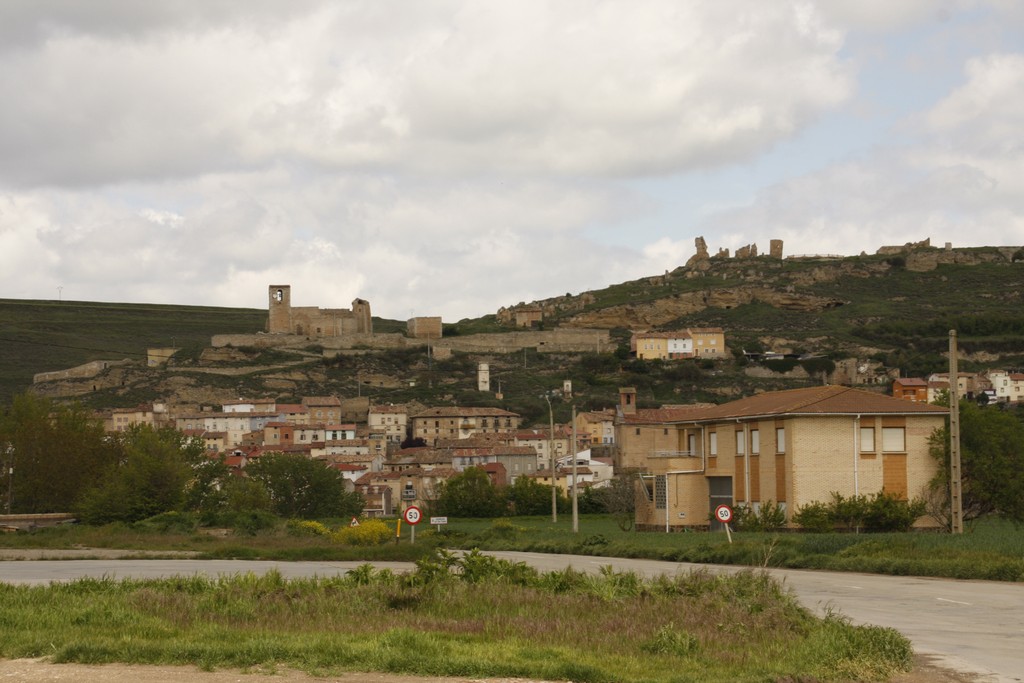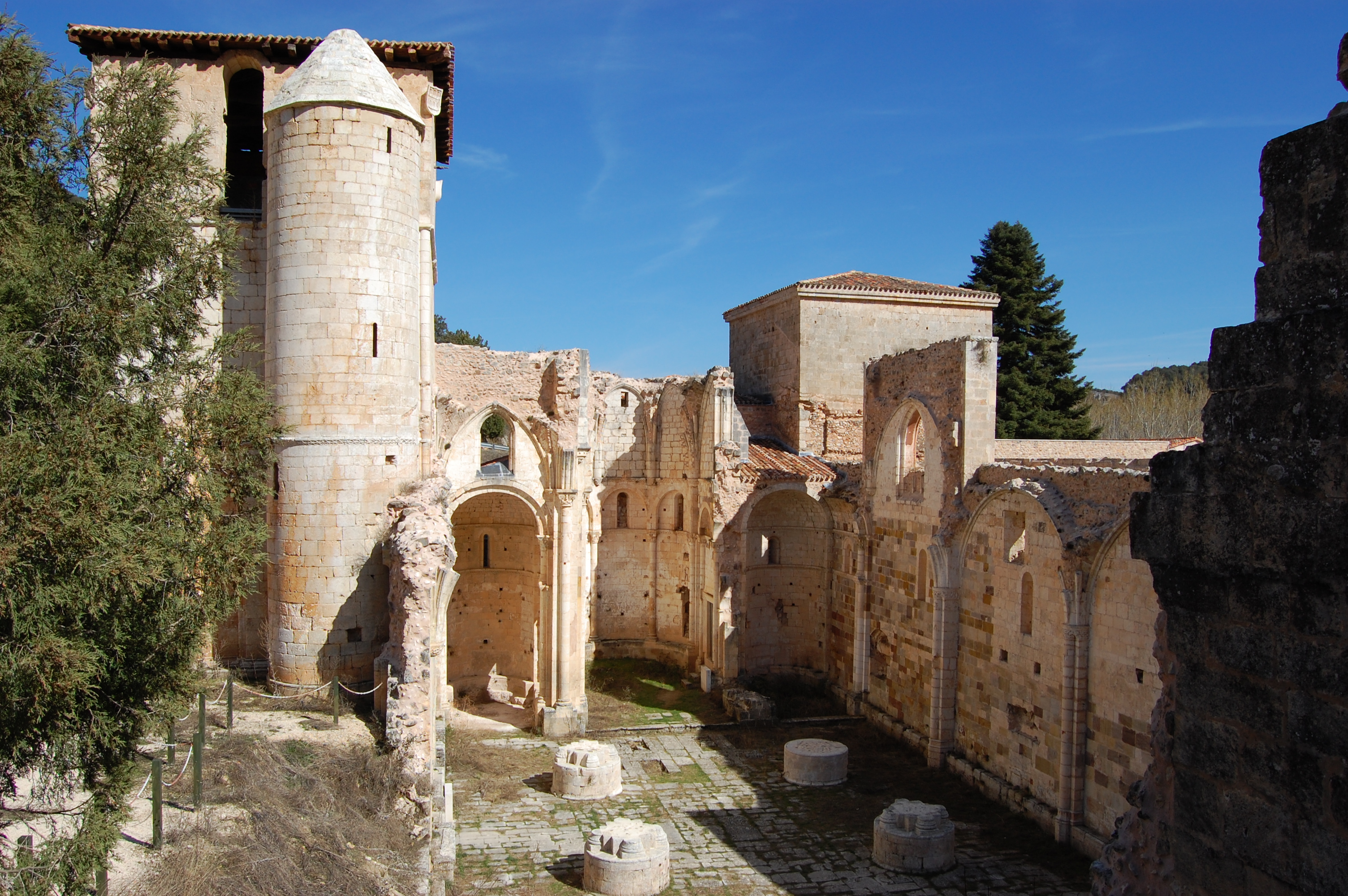Gonzalo Téllez on:
[Wikipedia]
[Google]
[Amazon]
Gonzalo Téllez (died 915) was a nobleman who was Count of
 Near the end of his reign, King
Near the end of his reign, King
 Gonzalo Téllez and his wife Flámula appear in the foundational document of the Monastery of San Pedro de Arlanza on 12 January 913. The charter was also signed by Muniadona, the mother of Count Fernán González, with her son Ramiro. Historian
Gonzalo Téllez and his wife Flámula appear in the foundational document of the Monastery of San Pedro de Arlanza on 12 January 913. The charter was also signed by Muniadona, the mother of Count Fernán González, with her son Ramiro. Historian
Lantarón Lantarón (Basque: ''Landaran'') is a town and municipality located in the province of Álava, in the Basque Country, northern Spain.
Villages
* Alcedo(Altzeta)
* Bergüenda(Bergoiandia)
* Caicedo de Yuso(Kaitzeo)
* Comunión
* Fontecha (O ...
and Cerezo (c. 897–c. 915) and is also mentioned in a document dated 903 as Count of Castile. He and his wife were the founders of the Monastery of San Pedro de Arlanza
San Pedro de Arlanza is a ruined Benedictine monastery in north central Spain.
It is located in the valley of the river Arlanza in Hortigüela, Burgos. Founded in 912, it has been called the "cradle of Castile" (''cuna de Castilla''). It was aband ...
.
''Tenencias'' and estates, military campaigns and repopulation
Because of the relentless incursions of the armies of the Emirate of Córdoba from the end of the 8th-century against the counties of Castile and Álava, which intensified in the first decades of the 9th-century, it became necessary to build several defensive fortifications, including those at Cerezo in Castile and at Lantarón and Astúlez in Álava. The first mention of a count governing Álava exclusively dates to 882 whenVela Jiménez
Vela Jiménez who appears also as ''Vigila Scemeniz'', is documented on two occasions as Count of Álava between 882 and 883 in the ''Codex Vigilanus'', compiled in 881 with two large paragraphs added subsequently describing the events that took pl ...
appears as ''tenente'' of the region, which was possibly governed previously by Count Rodrigo of Castile
Ruderick (Latin: ''Rudericus''; died on 4 October – 5 November 873), better known by his Spanish name Rodrigo, was an influential noble of the Kingdom of Asturias, and was probably the first Count of Castile (850/862–873) and Álava (867/868 ...
.
 Near the end of his reign, King
Near the end of his reign, King Alfonso III of Asturias
Alfonso III (20 December 910), called the Great ( es, el Magno), was the king of León, Galicia and Asturias from 866 until his death. He was the son and successor of Ordoño I. In later sources he is the earliest to be called "Emperor of Spai ...
(866–910) reorganized these easternmost lands and divided them into counties, appointing as governors of each of these his most trusted counts. Gonzalo Téllez was one of these counts and was entrusted with the government of Cerezo and Lantarón, the latter being particularly important because of its strategic location from where the count was able to control access to the valley of the Omecillo and the land along the banks of the River Ebro adjacent to Miranda.
Following the death of the Emir of Córdoba Abdullah ibn Muhammad al-Umawi in 912, his successor Abd-ar-Rahman III
ʿAbd al-Rahmān ibn Muḥammad ibn ʿAbd Allāh ibn Muḥammad ibn ʿAbd al-Raḥmān ibn al-Ḥakam al-Rabdī ibn Hishām ibn ʿAbd al-Raḥmān al-Dākhil () or ʿAbd al-Rahmān III (890 - 961), was the Umayyad Emir of Córdoba from 912 to 92 ...
first had to dedicate his efforts to quashing the rebels of Al-Andalus. King García I of León
García I (c. 871 – 19 January 914) was the King of León from 910 until his death and eldest of three succeeding sons of Alfonso III the Great by his wife Jimena.
García took part in the government alongside his father until 909. In that ye ...
seized the opportunity and in 913 went to the eastern march of the Kingdom of León
The Kingdom of León; es, Reino de León; gl, Reino de León; pt, Reino de Leão; la, Regnum Legionense; mwl, Reino de Lhion was an independent kingdom situated in the northwest region of the Iberian Peninsula. It was founded in 910 when t ...
, to the dominions of Count Gonzalo. From there, his armies advanced towards La Rioja and conquered Nájera and Calahorra, and laid siege to Arnedo, which resisted. Nevertheless, the Christian troops soon withdrew, possibly because the king had become seriously ill.
Besides Vela Jiménez and Gonzalo Téllez, and until 992 when Count Fernán González Fernan or Fernán is both a given name and a surname. Notable people with the name include:
* Fernán Blázquez de Cáceres, Spanish nobleman
* Fernán Caballero (1796–1877), Spanish novelist
* Fernando Fernán Gómez (1921–2007), Spanish actor ...
of Castile began to govern Álava, three other counts were ''tenentes'' of the Álava region: Munio Vélaz Munio Vélaz or Vigílaz (died before 931) was the Count of Álava and probably also of Biscay. The exact dates of his countship are unknown. Only one document, dated 18 May 919 in the cartularies of Valpuesta, names Munio as count in Álava. He r ...
, Fernando Díaz
Fernando Díaz (''floruit'' 1071–1106) was a Spanish nobleman and military leader in the Kingdom of León, the most powerful Asturian magnate of the period. He held the highest rank in the kingdom, that of count (Latin ''comes''), from at least ...
and Álvaro Herraméliz. None of them were counts of Castile or Burgos.
Count Gonzalo's estates were situated in the Pedernales area, an uninhabited land a short distance from Burgos that was later incorporated into the current town of Villagonzalo Pedernales
Villagonzalo Pedernales is a municipality located in the province of Burgos, Castile and León, Spain. According to the 2004 census (INE
INE, Ine or ine may refer to:
Institutions
* Institut für Nukleare Entsorgung, a German nuclear research ...
, which bears his name, and in the valley of the Omecillo River, between Tobillas and San Zadornil. His dominions stretched from the Nervión
, name_etymology =
, image = Nervion.jpg
, image_size = 300px
, image_caption = River Nervion with Zubizuri footbridge.
, map =
, map_size =
, map_caption =
, pushpin_map ...
to Sierra de la Demanda with the fortresses Lantarón, Pancorbo
Pancorbo is a municipality and town located in the Burgos (province), province of Burgos, Castile and León, Spain. According to the 2004 census (Instituto Nacional de Estadística (Spain), INE), the municipality has a population of 464 inhabitan ...
and Cerezo. From there, he could protect the eastern frontier against Muslim raids, particularly those of the Banu Qasi
The Banu Qasi, Banu Kasi, Beni Casi ( ar, بني قسي or بنو قسي, meaning "sons" or "heirs of Cassius"), Banu Musa, or al-Qasawi were a Muladí (local convert) dynasty that in the 9th century ruled the Upper March, a frontier ter ...
.
Gonzalo is first documented in a charter dated 18 November 897 (lost, but quoted by Gregorio de Argaiz
Gregorio is a masculine given name and a surname. It may refer to:
Given name
* Gregorio Conrado Álvarez (1925–2016), Uruguayan army general and de facto President of Uruguay from 1981 until 1985
* Gregorio Álvarez (historian) (1889–1986), ...
), which mentions that King Alfonso III reigned in Oviedo (the capital of Asturias) and Count Gonzalo Téllez in Lantarón. On 24 September 902, Gonzalo and his wife Flámula (also called Lambra in other documents) made a donation to the Monastery of San Pedro de Cardeña
A monastery is a building or complex of buildings comprising the domestic quarters and workplaces of monastics, monks or nuns, whether living in communities or alone (hermits). A monastery generally includes a place reserved for prayer which ...
consisting of agricultural land in Pedernales. A year later, on 1 September 903, he appears as ''Gondesalbo Telluz in Castella'', the only time that he is mentioned as Count of Castile.
In 912, Gonzalo Téllez was one of the three counts that King García entrusted with the repopulation of the land along the banks of the Duero River: Munio Núñez
Munio Núñez, Count of Castile (899– and c. 904–c. 909), was a nobleman who was almost certainly the son of Nuño Muñoz, who would have been the son of Munio Núñez de Brañosera who in 824, with his wife Argilo, granted the '' Carta Puebl ...
repopulated Roa; Gonzalo Fernández brought settlers to Burgos, Clunia and San Esteban de Gormaz; and Gonzalo Téllez settled Osma
Burgo de Osma-Ciudad de Osma is the third-largest municipality in the province of Soria, in the autonomous community of Castile and León, Spain. It has a population of about 5,250.
It is made up of two parts:
*the smaller Ciudad de Osma (city ...
.
In a charter dated 25 October 913, where Gonzalo and Flámula made a donation to the abbot of the Monastery of San Jorge, San Juan y San Martín de Cerezo, he appears as governing Cerezo (''regnante principe Garseani in Legione et comite Gundisssalbo Telliz in Cerasio'').
Founding of the Monastery of San Pedro de Arlanza
 Gonzalo Téllez and his wife Flámula appear in the foundational document of the Monastery of San Pedro de Arlanza on 12 January 913. The charter was also signed by Muniadona, the mother of Count Fernán González, with her son Ramiro. Historian
Gonzalo Téllez and his wife Flámula appear in the foundational document of the Monastery of San Pedro de Arlanza on 12 January 913. The charter was also signed by Muniadona, the mother of Count Fernán González, with her son Ramiro. Historian Justo Pérez de Urbel
Justo Pérez Santiago (August 7, 1895 – 1979) later known as Fray Justo Pérez de Urbel y Santiago O.S.B. was a Spanish Roman Catholic clergyman (Order of Saint Benedict) and medievalist, first abbot of the Monastery of the Holy Cross of t ...
suggested that Muniadona and Gonzalo's wife, Flámula, were sisters, but the two charters on which he based this hypothesis are clearly spurious. Although the founding of the monastery is attributed in later historiography to Count Fernán González, its actual founder was Count Gonzalo Téllez.
Gonzalo last appears in a document of 25 February 915, through which he donated Cótar to the Monastery of San Pedro de Cardeña. He probably died between that date and May 919 when Munio Vélaz, possibly a son of Vela Jiménez, appears as Count of Álava. There is no record of Gonzalo having any descendants. His wife was still alive in November 929 when she made a donation to the monastery that they had founded for the soul of her deceased husband.
Notes
References
Bibliography
* * * * * * {{DEFAULTSORT:Tellez, Gonzalo Counts of Álava Counts of Castile 9th-century Asturian nobility 9th-century births 10th-century deaths People of the Reconquista 10th-century nobility from the Kingdom of León